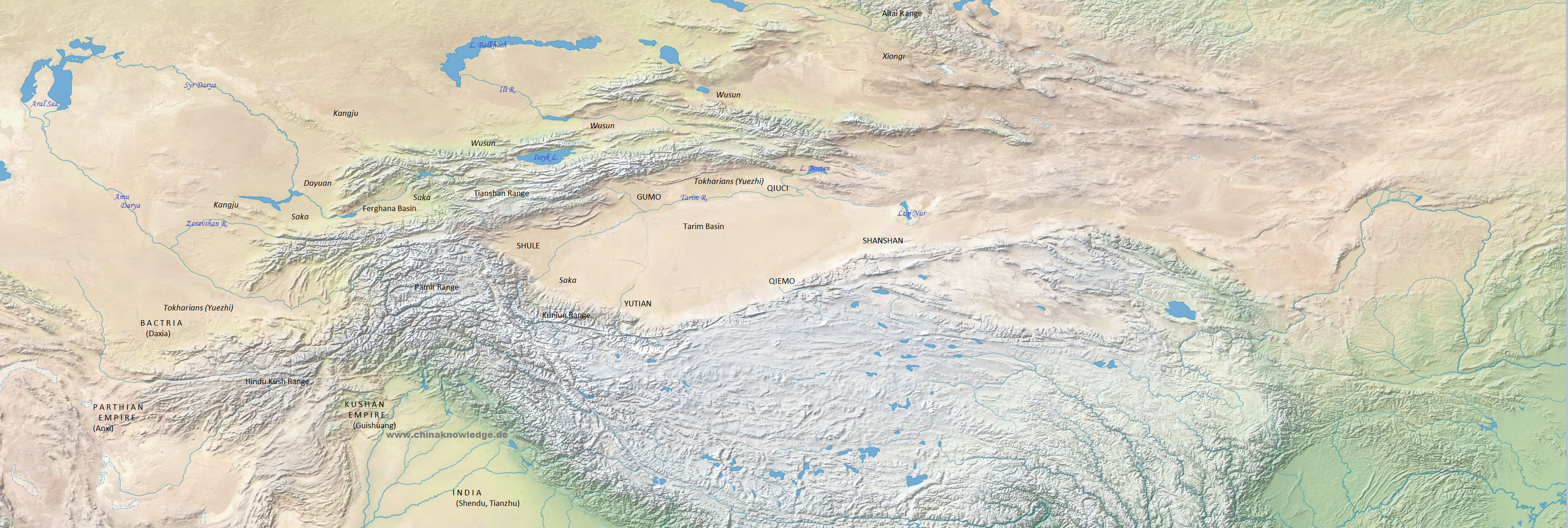Anxi 安息 was the Chinese name for the kingdom of the Parthians. It is first mentioned in the history Shiji 史記. As a region, Parthia covered the province of Khorazan in modern Iran, and as a kingdom, it existed between 247 BCE and 224 CE. The region was formerly reigned by the Achemenid dynasty (558-330 BCE) of Persia and then by the Hellenic dynasty of the Seleucids (312-256 BCE). Around 250 a tribesleader of the Parthavas called Arsaces rebelled against the Seleucids and founded an own kingdom. The Persians called this kingdom Arsak, from which name the Chinese term Anxi is derived.
The capital of Anxi/Parthia was by the Chinese called Pandou 番兜 (probably derived from Parthia) or Hedu 和櫝 (a mispelling?), by the Hellenic Greeks Hecatomplyon "City of the Hundred Gates". Under the rule of Mithridates I Parthia became a strong empire and conquered Bactria (by the Chinese called Daxia 大夏), the Seleucid empire, and so expanded the territory of Parthia from modern Irak to Pakistan, and from the Gulf of Persia to the Aral Sea.
 |
Based on Tan Qixiang 譚其驤, ed. (1995), Zhongguo lishi ditu ji 中國歷史地圖集, Vol. 2, Qin, Xihan, Donghan shiqi 秦西漢東漢時期 (Beijing: Zhongguo ditu chubanshe, 1996). Tribes and peoples in italics, states in normal letters. |
During the reign of Fraates II the Chinese discoverer and diplomat Zhang Qian 張騫 arrived in Central Asia. He did not enter Parthia but reported of this mighty empire when he came back to the court of Emperor Wu 漢武帝 (r. 141-87 BCE).
Shortly later the Tokharians (by the Chinese called Yuezhi 月氏) forced the tribes of the Sakas (by the Chinese called Sai 塞) to leave the region of the rivers Amu Darya and Syr Darya and to migrate towards the south. A great number of them settled down in the eastern regions of Parthia, like Merv, Herat and Seistan.
These migrations forced emperor Mithridates II to expell the Sakas from Parthian territory, so that they continued their migration into countries farther to the south. After the death of Mithridates II the Parthian empire came under the pressure of the Roman empire and the newly founded kingdom of the Kushans (Chinese name Guishuang 貴霜).
The Parthian empire was an important territory along the Silk Road, and Parthian merchants brought merchandise from east to west. Cities in Parthia flourished during that time.